Coming and going.
Working from home or only in the office.
In industry and in the countryside.
Physically and mentally.
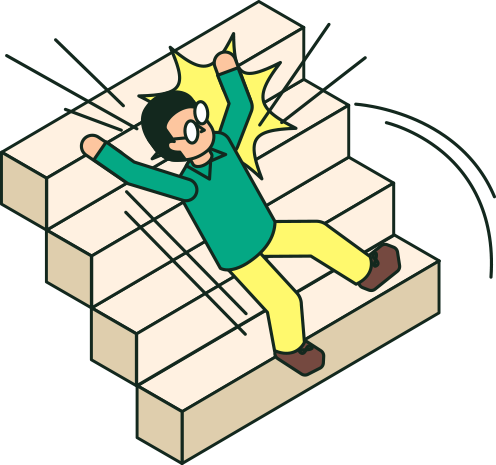
Unfortunately,
many! And in Brazil alone, they cost around seven lives every day.
In this campaign, as well as talking about protection, we’ll be talking about awareness. After all, how can we protect ourselves from risks of which we are often unaware? But before the practice, the theory: proper introductions!
Nice to meet you:
Work-related
Accident
According to Art. of Law 8213/91, a work-related accident is any bodily injury or functional disorder caused by the performance of a specific professional activity and which results in death or loss/reduction of the ability to work, either permanently or temporarily.
Composed of the most diverse risks that a worker’s professional routine has to offer, work-related accidents are divided into three groups: the typical accidents, the commuting accidents e as occupational diseases.
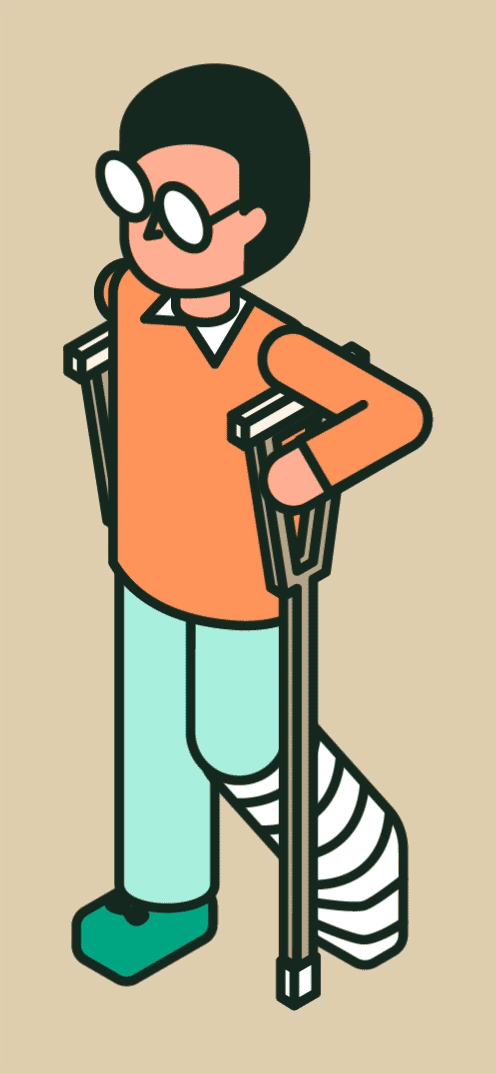
But before we delve into each one of them, it’s important to bear in mind that, as this is not a very recent law (dating back to 1991), many topics are – and should be – under constant discussion. Not only regarding professions that, until yesterday, didn’t even exist, but also their related and inherent risks. Recently, the Ministry of Health updated the list of work-related illnesses after 24 years, incorporating 165 new pathologies.
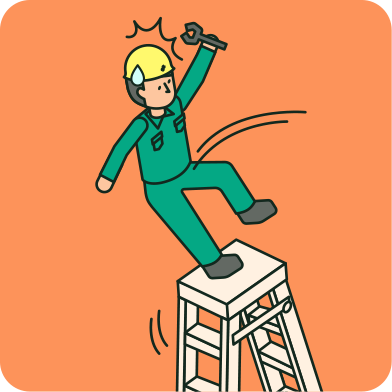
Typical Accidents
As the name implies, they usually occur during the typical and practical fulfillment of specific activities. Here’s a practical example: imagine that a worker in a meat processing plant who performs cuts, using a blade or any of their work tools, ends up injuring him/herself during their shift. There you have it: typical accident.

Commuting Accidents
Also easy to understand from their name, they happen when a worker has an accident on the way from home to work or vice versa. Example? The same worker mentioned above, on his/her way to the meat-packing plant, slips and hurts him/herself when getting onto the subway car.

Occupational Diseases
(equivalent to work-related accidents)
This is any damage to health related directly or indirectly to professional activity. They are divided into occupational diseases and work-related diseases.
The characteristic of a work-related accident or occupational disease will always depend on an investigation by the company’s Occupational Health and Safety team, whether it is in-house or outsourced. This is because, for such characterizations, there are methodologies that aim to guarantee the real relationship between events and accidents/diseases, as well as to evaluate improvements in the processes for preventing any potential new incidents. The very important learning curve.
Heads up,
IT’S TIME FOR
PREVENTION

Introductions duly made, let’s talk about what we can do, in practice, to minimize the chances of running into an accident at work? Unfortunately, the risks exist and will always exist.
But it’s up to us to adopt conscientious and defensive postures so that, should the need arise, we don’t have to deal with them in the worst way.
So take the following tips as a kind of guide, always bearing in mind that Occupational Safety does depend on the employer and adequate working conditions, but also on each and every one of us. After all, aren’t we the most interested party?
The risk of
coming and going
Until recently “unknown” to most workers, this type of work-related accident can no longer be ignored: INSS (Social Security National Institute) data reveals that, in 2023, commuting accidents accounted for 24% of all work-related accidents in the country.

Por isso, daqui para frente:
-
Assess the weather conditions for the day or even the week when deciding what kind of shoes and clothes to wear before going out to work. On rainy days¹, wear non-slip, closed-toe shoes (water-resistant if possible). And of course, the good old umbrella!
¹ Always pay attention to weather alerts issued by public bodies. Depending on the rainfall and general conditions, it may be advisable to stay at home. -
Before you leave, always take a last look at the local news or navigation apps to avoid unforeseen events (public transport strikes, traffic closures, etc.) – and choose the best route.
-
Haste is the enemy of prevention. Therefore, leave home in advance so that you don’t have to risk racing the clock.
-
If you are driving, always wear a seat belt (for cyclists and motorcyclists, helmet and appropriate clothing), check the safety conditions of your vehicle (tires, brakes, lights, fuel level, etc.), keep preventive check-ups up to date and keep your cell phone away from the steering wheel (!!!). (!!!).
-
By van, bus or subway, do not get on/off outside the indicated places and follow the safety guidelines of each means of transportation. On foot, adopt a defensive posture when walking down the street and observe all signposts – as well as, of course, avoiding the distractions of your cell phone while walking.
-
If you take your laptop to work and home, carry it in a suitable backpack: it should be worn with both straps over the shoulders and appropriately adjusted so that it doesn’t fall off.
-
Avoid taking items that are not strictly necessary. As well as adding excessive weight to the backpack, they can contribute to future osteomuscular problems.
The risk of
working
from home
If the work has been done indoors, it’s only fair to bring the concern for your safety indoors as well.
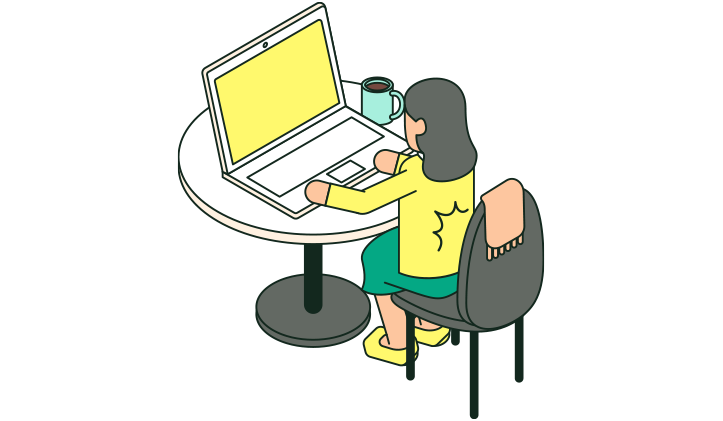

So, when the work is remote:
Risk in the
office
Anyone who thinks that work-related accidents only happen in construction and industry and that an office environment is free from this danger would be mistaken.
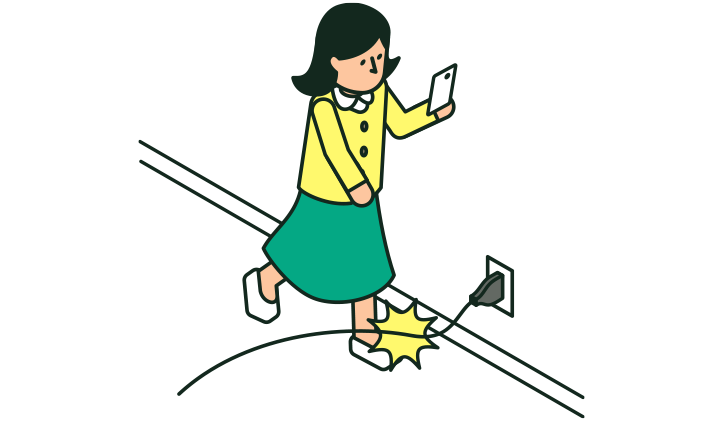

In addition to the ergonomic and well-being tips above:
-
Try to keep the room free of objects and materials scattered on the floor. Doors and corridors should also always be kept clear, not only to avoid bumps and bruises, but also to be effective in the event of a fire emergency, for example.
-
When going up and down stairs, try to keep your hands free to hold onto the handrail. On stairs, anti-slip strips are essential to prevent slipping.
-
When storing materials and files, especially on high shelves, make sure they can bear the weight. And always place the heaviest items at the bottom of cabinets.
-
Environments with many corridors can have blind spots. Avoid distractions and, when moving around, pay close attention to fire extinguishers, pillars and even other colleagues.
-
Do not leave sharp objects unprotected in drawers.
-
Avoid overloading sockets with plug adapters and don’t leave electrical wiring lying around in areas of the room where people, trolleys and equipment are likely to circulate.
-
Chemical products may only be handled by qualified persons. Store them in a suitable and properly identified place.
Risk in
industrial
activities
We come to the most classic type of work-related accident, the one that immediately comes to mind when we talk about the subject.


So here are some tips:
-
Promote concern for safety among your colleagues through awareness-raising and training (seminars, lectures, courses, talks, etc.). When they understand the need for care, they really take care of themselves.
-
Do your part in monitoring! If the company keeps up to date and complies with the RNs (Regulatory Norms), the chances of incidents drop significantly.
-
Being equipped with the appropriate PPE (Personal Protective Equipment) is also essential. Gloves, helmets, goggles, vests, ear protectors and safety boots, among other types of equipment, must be provided by the employer.
-
Just as human personnel need to be trained and made aware, machines and equipment also need to be serviced regularly. There’s no point, for example, in everyone wearing PPE if the machinery poses an imminent danger.
-
Acknowledge the value of internal bodies and initiatives of the company, such as the IAPC (Internal Accident Prevention Commission) and the SIPAT (Internal Prevention of Work-related Accidents Week), which are made up of employees themselves and not only defend the interests of employees, but are also important instruments for engaging them with the preventive requirements of the law and the organization.
Risk in the
emotional
sphere
The work-related accident that nobody sees! This is how the emotional disorders associated with the professional routine are known. This invisibility is reflected both in the (obvious) lack of physical evidence of the disease and in the lack of knowledge of the condition amongst colleagues, managers and often the worker him/herself.


Stress, anxiety, depression, substance abuse… These are common reflexes in professional environments where unfair competition, excessive demands, harassment and any external pressure that results in loss of confidence, isolation, lack of autonomy predominate.
In recent times, this type of occupational illness has been considered by law to be work-related accidents for the worst reason: a North American study showed that mental health problems, such as anxiety and depression, are already responsible for 52% of work-related accidents.
AWARENESS + COMMUNICATION
= PREVENTION


Just as important as everything we’ve mentioned so far is communication.
After all, safety also depends on information, and a clear and direct channel capable of disseminating protection measures, as well as previous incidents and accidents (so that they don’t happen again), is essential.
So whenever you notice a risky situation, no matter where you are in your professional routine, report it! Democratize knowledge so that your co-workers are aware of the same risk and the company’s prevention procedures can be properly put in place.
And speaking of communication…
Help spread this campaign to as many people as possible by sharing this content with your network and downloading our digital pack.



